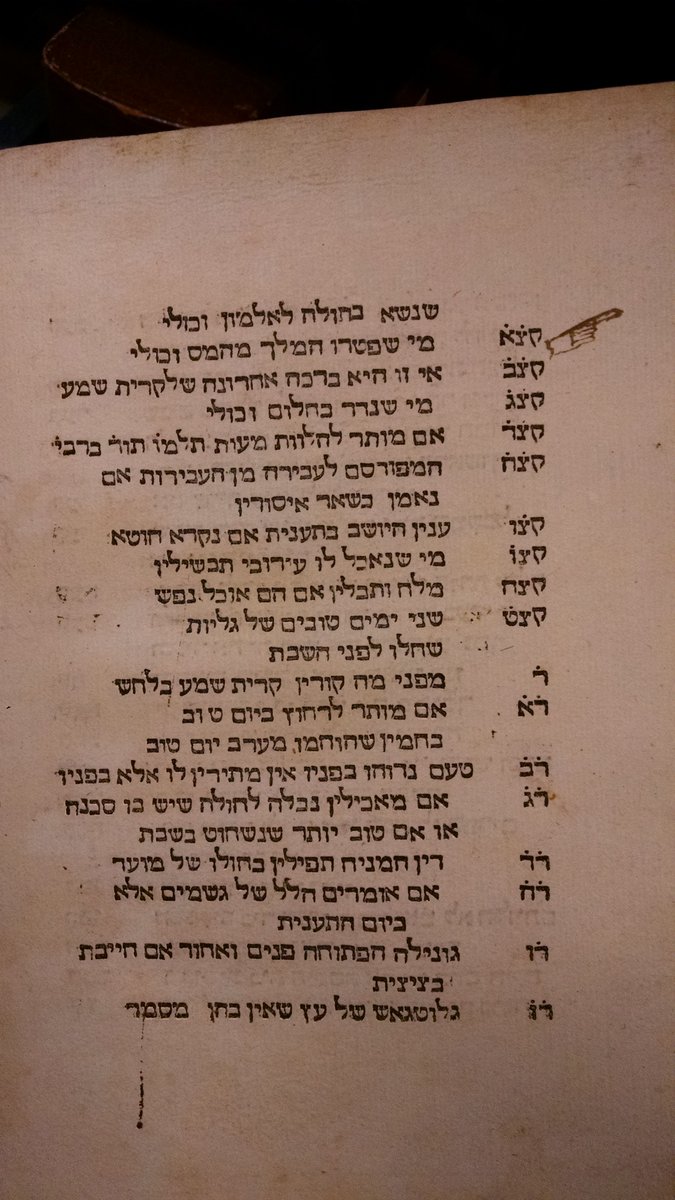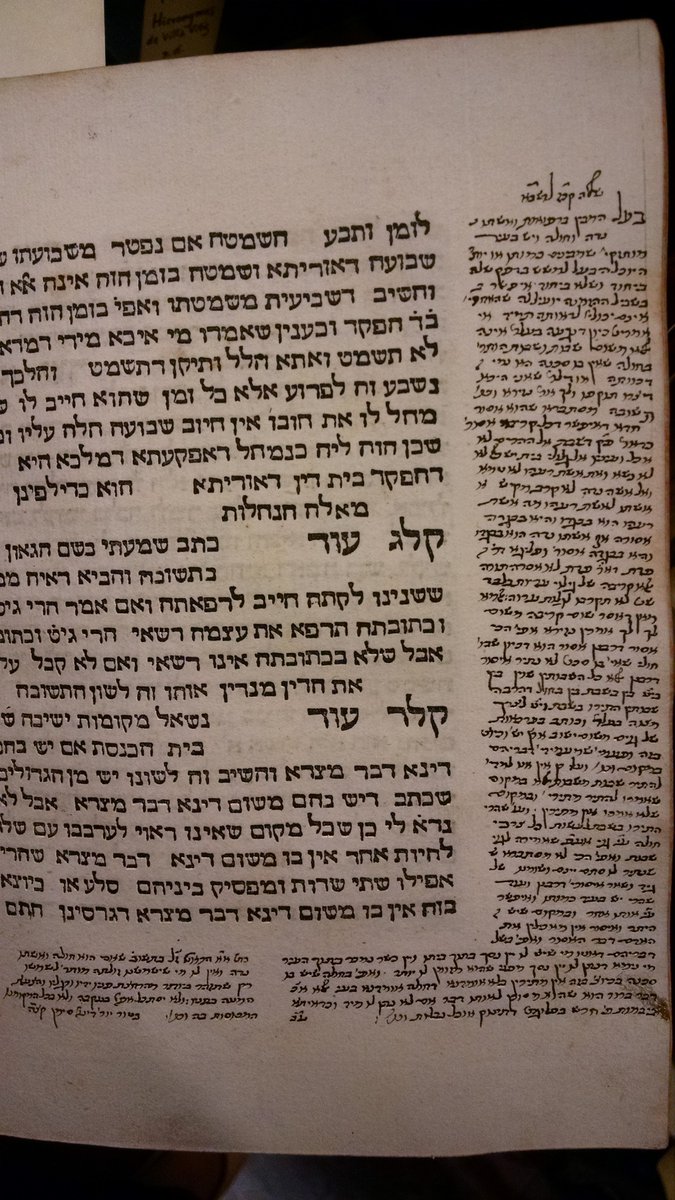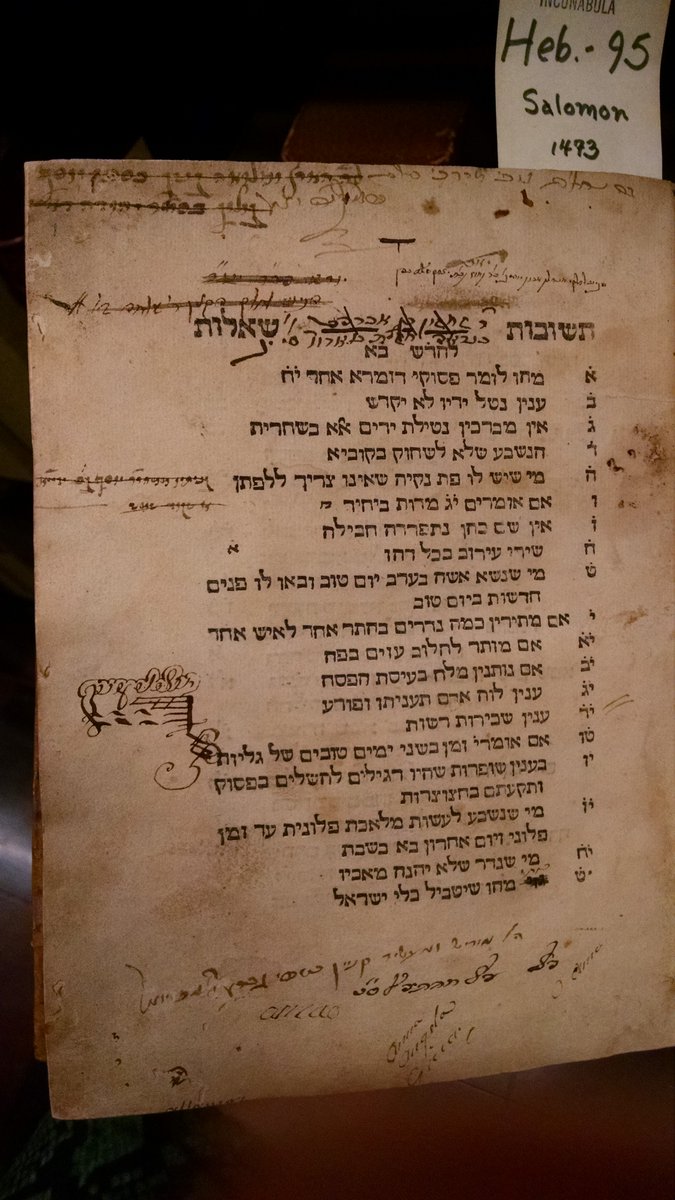
Judaica @Columbia, provenance @Footprints_Heb, #dhjewish, Jewish #bookhistory, #judaicalibrarianship #codexconquestJE @CULhebrewmss. Profile by @ilanblock
How to get URL link on X (Twitter) App


https://twitter.com/hchesner/status/973962159276294144?t=DRia15zzGlAIsEb5MDdSMQ&s=19

 We start with the question of literacy, for which I bring the Teshuva of the Rambam (in his hand) regarding the 12th century teacher who wanted to go back on his oath not to teach the daughters of a certain man (ie he wanted to teach them again): blogs.bl.uk/asian-and-afri…
We start with the question of literacy, for which I bring the Teshuva of the Rambam (in his hand) regarding the 12th century teacher who wanted to go back on his oath not to teach the daughters of a certain man (ie he wanted to teach them again): blogs.bl.uk/asian-and-afri… 

 One of my favorite Footprints sets the scene: Alfasi's Halakhot Gedolot (Krakow, 1597-8) with an owner's inscription expressing his amazement at holding a book printed 181 years ago
One of my favorite Footprints sets the scene: Alfasi's Halakhot Gedolot (Krakow, 1597-8) with an owner's inscription expressing his amazement at holding a book printed 181 years ago





 Naples is not far from Salonika, where the first edition of his commentary on the Bible was printed in 1522.
Naples is not far from Salonika, where the first edition of his commentary on the Bible was printed in 1522.
https://twitter.com/JuliaWalworth/status/1417524309594185729I mean, the @CULHebrewMss bot basically does this, but with less context.
https://twitter.com/prof_dainy/status/1417478249685323785As someone who celebrates my own Orthodoxy, I think it’s critical to listen to those who left (that doesn’t mean accept every word uncritically when there is clear sensationalism and lying, as with JH, but allow yourself to hear and learn when it’s sincere, as this piece is).
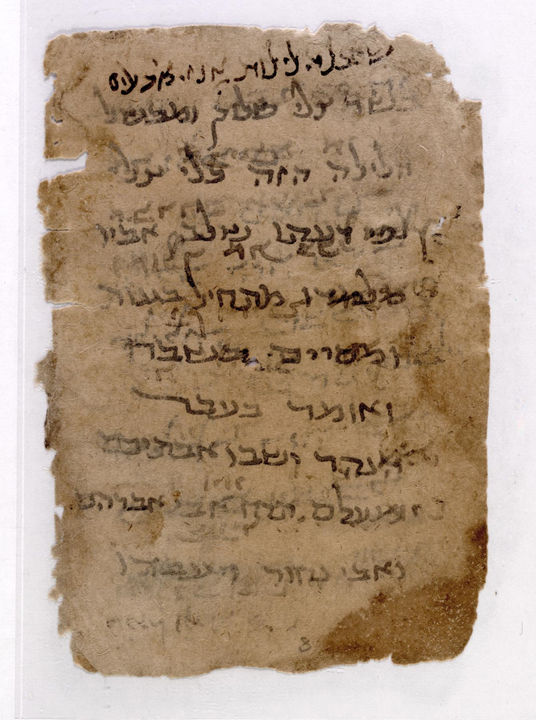

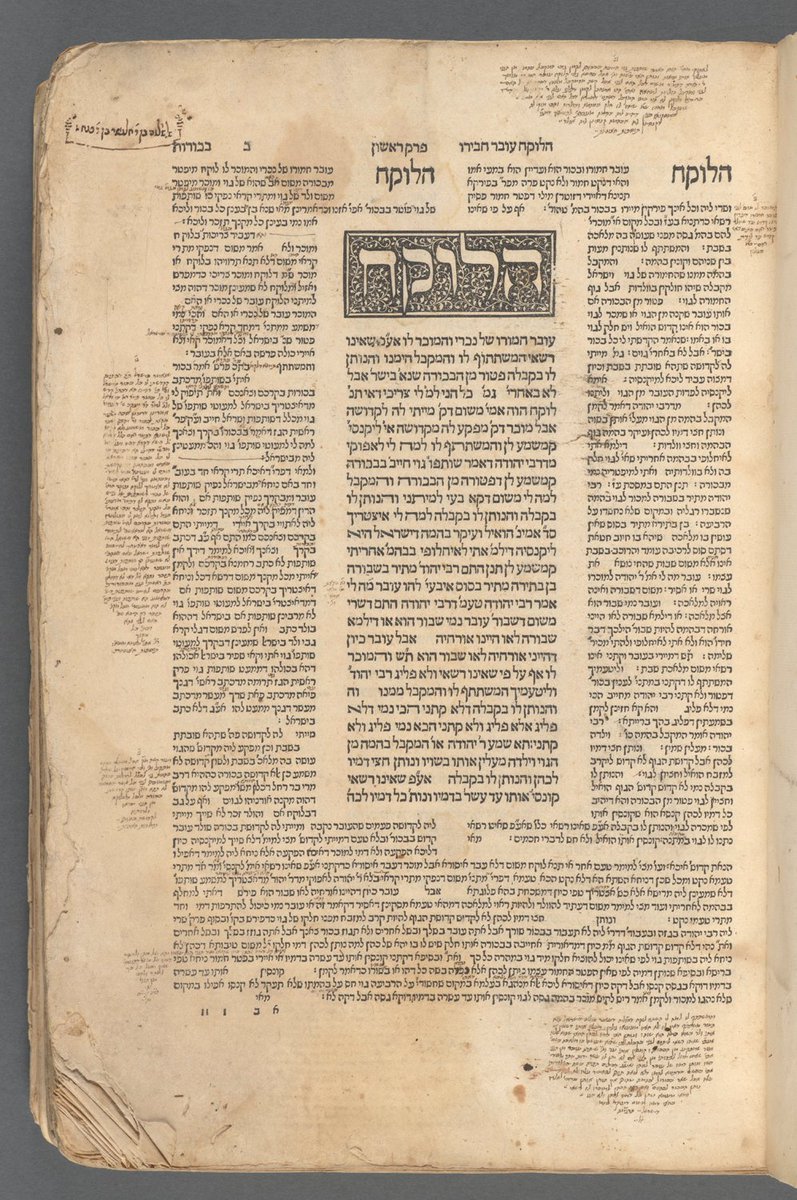
https://twitter.com/culhebrewmss/status/1163465660283772928@columbialib This one doesn't have commentaries either, and is known as the "Columbia Talmud" to Talmud scholars. It is an early Yemenite version, with significant differences from the printed text. We have Betsah, Pesahim, Megillah, Moe'd Katan, and Zevahim in 2 v.
https://twitter.com/CULHebrewMss/status/1200142335062863872?s=20




 Here are some images of @columbialib's She'elot u-teshuvot Shelomo ibn Aderet (Goff Heb-95), with lovely annotations!
Here are some images of @columbialib's She'elot u-teshuvot Shelomo ibn Aderet (Goff Heb-95), with lovely annotations! 